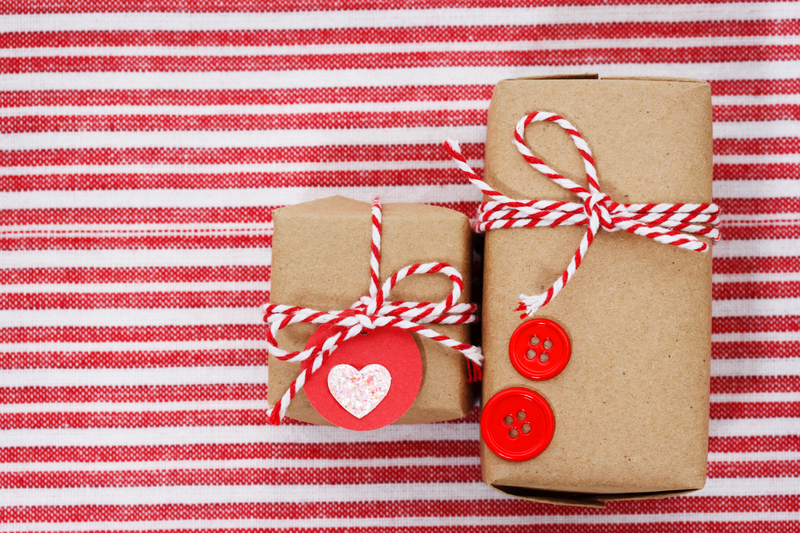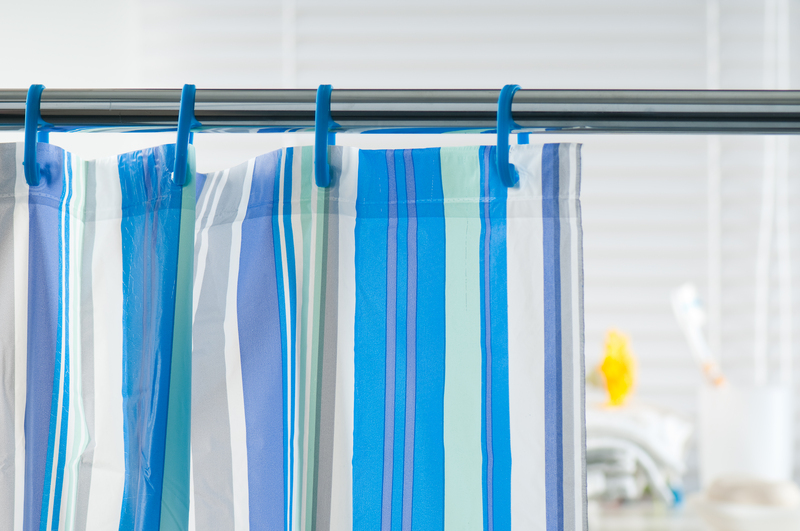Eco-Friendly Tips for Transforming Household Rubbish into Must-Have Accessories
Discover how simple steps and a dash of creativity can elevate your home's sustainability while supplying you with unique, must-have accessories. Upcycling household rubbish isn't just a trend; it's a rewarding lifestyle choice that conserves resources and inspires innovation.

Why Upcycle Household Rubbish into Accessories?
Transforming household rubbish into practical or fashionable items brings a world of benefits. When you repurpose discarded materials, you:
- Reduce landfill waste and the environmental impact of disposal.
- Save money by creating accessories instead of buying new ones.
- Express creativity in eco-friendly, tangible ways.
- Teach valuable lessons in sustainability and resourcefulness to family and friends.
- Inspire others to consider an eco-conscious lifestyle.
Ready to discover what your rubbish bin is hiding? Our guide explores eco-friendly hacks to transform waste into must-have accessories every home can enjoy.
Understanding What You Can Repurpose
Before you transform household waste into treasures, it's crucial to know which items are best suited for upcycling projects. Some common household rubbish types perfect for must-have accessories include:
- Glass jars and bottles
- Plastic containers and lids
- Metal cans and tins
- Old fabric and clothing
- Cardboard and paper
- Broken jewelry bits
- Wine corks, bottle caps, and miscellaneous knickknacks
Safe Preparation: Getting Rubbish Ready for Transformation
Safety first! Always clean, disinfect, and dry any household rubbish you plan to reuse. Remove sharp edges on metal or glass items, and double-check plastics for food residue. If you're working with children, supervise when handling scissors or glue.
Creative Upcycling Ideas for Must-Have Accessories
Let's dive into specific, eco-friendly ways to turn household rubbish into must-have accessories! Each project below starts with simple materials you likely have at home.
1. Upcycled Jewelry from Old Electronics and Beads
- E-waste jewelry: Use small components from broken electronics like circuit boards, old headphones, and loose wires. Combine them with beads or broken jewelry to create funky earrings, bracelets, or statement necklaces.
- Bottle cap charms: Clean and paint old bottle caps, then attach a jump ring to make unique charms for bracelets or keychains.
2. Glass Jar Storage and Decor Accessories
- Glass jar organizers: Repurpose large jars for storing makeup brushes, pens, or art supplies. Decorate with paint, twine, or washi tape for style.
- Luminary lanterns: Poke holes in tin can sides to form patterns, then place a candle inside for eco-conscious mood lighting.
3. Fashion Accessories from Old Clothes
- T-shirt tote bags: Cut and tie old T-shirts into reusable grocery bags. No sewing required for many patterns--just knots!
- Denim pocket wallets: Salvage back pockets from worn jeans, sew or glue the sides, and add a zipper or button for a one-of-a-kind coin purse.
- Scrunchies and hairbands: Reuse fabric scraps from old pajamas or shirts to make fashionable hair accessories.
4. Cardboard and Paper Creations
- Organizer trays: Use sturdy cardboard from cereal boxes to craft drawer dividers or desktop organizers. Cover with decorative paper to personalize.
- Paper bead jewelry: Roll magazine pages or wrapping paper into beads, glaze them for shine, and string them as necklaces or bracelets.
5. Plastic Bottle Accessories
- Planters and pen holders: Cut large plastic bottles in half and paint or wrap them with rope for planters or desk containers.
- Eco-friendly phone stands: Reimagine small bottles into unique phone holders by making clever cuts and reinforcing with tape or rubber bands.
6. Cork and Cap Crafts
- Cork keychains: Loop wire or twine through used wine corks for floatable, customizable keychains.
- Bottle cap magnets: Add a small magnet and an interesting design to create fridge magnets from bottle caps.
Essential Tools and Supplies for Eco-Friendly Upcycling
Stock your eco-creative toolbox for safe, effective upcycling. These basics will help you convert rubbish into must-have accessories:
- Sharp scissors and utility knives
- Water-based or non-toxic paint and markers
- Glue gun and eco-friendly adhesives
- Thread, needles, or sewing machine (for fabric projects)
- Sandpaper for smoothing sharp edges
- Protective gloves for working with metal or glass
- Magnets, buttons, beads, string, and any spare crafting materials
Pro Tips for Stunning, Long-Lasting Upcycled Accessories
- Choose quality waste. Avoid items that are too dirty, brittle, or hazardous.
- Blend materials creatively. Mix glass, metal, and fabric for entirely new textures and looks.
- Test for durability. Reinforce structures with double glue, extra thread, or added supports to ensure your accessories last.
- Personalize everything--the more custom, the more cherished your creation becomes.
- Look for biodegradable glues and paints to keep your projects even greener.
The Environmental Impact of Accessory Upcycling
Eco-friendly accessory creation isn't just fun--it's an important step toward a healthier planet. By repurposing household rubbish, you:
- Reduce resource consumption needed for new goods.
- Minimize landfill pressure by diverting plastics, glass, and textiles.
- Help lower emissions by lessening demand for manufactured products.
- Encourage thoughtful consumption and spark conversations about sustainable fashion and design.
Every accessory you upcycle is a small act with lasting benefits.
Facts and Figures: The Power of Upcycling
- The average person generates about 4.9 pounds of trash daily--much of which could be reused.
- Textiles account for nearly 8% of landfill waste; upcycling fabrics can make an enormous difference.
- Plastic bottles take up to 450 years to decompose--turning them into repairable and stylish accessories keeps them out of landfills.
Inspiring Stories: Creativity in Action
The Bottle Cap Artist
Elena from Lisbon transforms soda caps into vibrant brooches and exhibition art, letting nothing go to waste. Her creations have caught the eye of eco-conscientious bloggers worldwide.
Family Upcycling Days
Every weekend, the Fernandez family in California sets aside time to upcycle their household rubbish into gifts, home decor, and accessories. They gift upcycled keychains and coin purses during holidays, inspiring their community to follow suit.
Getting Started: Step-by-Step Upcycling Guide
Step 1: Collect and Clean
- Sort rubbish by type--plastics, metals, glass, fabric, paper.
- Wash and dry thoroughly to avoid odors or mold.
Step 2: Plan Your Project
- Search for inspiration online (Pinterest, DIY blogs).
- Sketch your accessory idea and decide which materials you'll use.
Step 3: Assemble Tools and Materials
- Gather your clean rubbish and all necessary tools.
- Decide if you want to add embellishments like paint or ribbon.
Step 4: Create!
- Cut, glue, sew, or tie as required by your design.
- Test durability and comfort, especially for wearable accessories.
Step 5: Show and Share
- Wear or use your new eco-friendly accessory proudly.
- Share your process on social media or with friends to inspire others.
Additional Eco-Friendly Tips for Maximizing Upcycling Potential
- Host a swap party: Invite friends to trade unused fabrics, jars, and trinkets for upcycling projects.
- Visit recycling centers: They often have bins of discarded materials perfect for creative reuse.
- Join or start a community upcycling club for fresh ideas and shared tools.
- Document your process--before and after photos can be incredibly motivating!
- Whenever possible, source biodegradable or recycled craft supplies to keep your accessory creations truly green.

Frequently Asked Questions on Upcycling Waste into Accessories
- How safe is it to upcycle household rubbish?
With proper cleaning, avoiding sharp objects, and using non-toxic materials, upcycling is safe. Supervise children and avoid materials previously housing chemicals. - Can upcycled accessories really last?
Yes--when made with care, many upcycled items such as glass jars, fabric bags, and metal jewelry can last for years. - Is upcycling cost-effective?
Most projects use supplies you already have, reducing the need to buy new materials and saving significant money over time. - Where can I find more inspiration for eco-friendly accessory creation?
Check YouTube, Pinterest, sustainability-focused blogs, and online upcycling communities for constant inspiration.
Conclusion: Small Changes, Big Impact for a Greener World
With a little imagination, your household waste can become tomorrow's must-have eco-friendly accessories. Each project--be it a t-shirt tote, cork keychain, or glass jar organizer--delivers both personal satisfaction and environmental benefit. By adopting upcycling at home, you demonstrate that creativity and sustainability truly go hand in hand.
Start today--look at the next piece of rubbish in your hand, and envision not waste, but potential. From landfill-bound to loveable, every transformed item is a step toward a healthier planet and a more resourceful you.
Happy upcycling!
